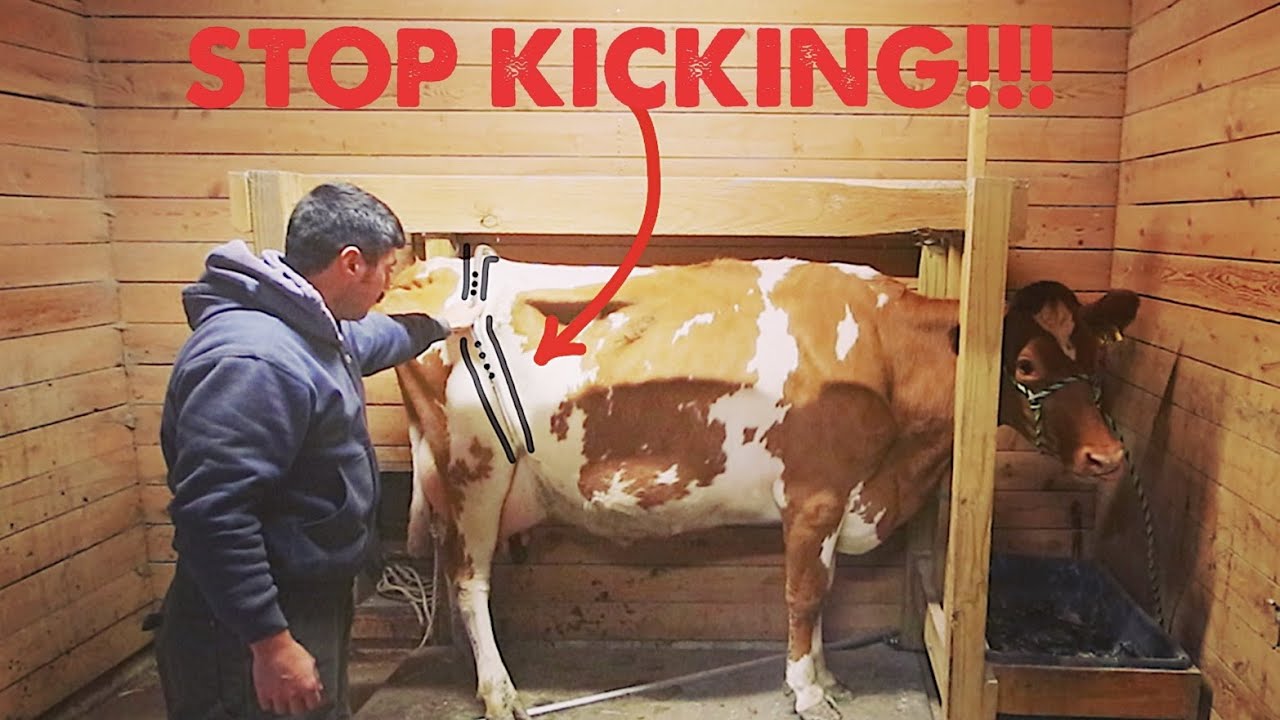In contemporary society, the juxtaposition of human attitudes toward various animal species is both perplexing and revealing. A phenomenon that has sparked debates among animal rights activists and scholars alike is the rationale behind societal acceptance of certain behaviors towards animals, particularly cows, in stark contrast to the stringent protections afforded to domestic pets, especially dogs. This brings us to an intriguing yet provocative question: Why is it considered socially acceptable to kick a cow, yet straying beyond the bounds of pet care to physically assault a dog would elicit widespread outrage and potentially punitive measures? The answer to this query delves into the deeper ramifications of speciesism, cultural conditioning, and the evolving nature of animal rights advocacy.
At the outset, it is essential to delineate the fundamental differences in the roles these animals play in human society. Cows are predominantly viewed through the lens of agricultural utility; they are often seen as livestock, cultivated primarily for human consumption. This utilitarian perception engenders a level of acceptance toward more aggressive forms of handling—particularly on factory farms. Conversely, dogs are considered companions. They occupy an intimate space in human homes and hearts, regarded almost as family members. This societal inclination to value one animal over another based on their perceived utility raises significant ethical questions.
One must consider the impact of cultural and social conditioning on our perceptions of animal rights. Societies have traditionally viewed animals through a hierarchal lens, assigning varying degrees of moral consideration based on species. Cows, as part of an industry that is deeply embedded in agricultural practices, often endure rigorous treatment, justified under the guise of food production. In many instances, the conventions of farming grant a tacit endorsement of physical coercion—be it through the use of electric prods or rough handling—seen as necessary evils in the pursuit of profit. Herein lies a troubling crux of animal rights: the commodification of lives that prompts acceptance of violent treatment.
This perspective sharply contrasts with the approach many individuals adopt towards pet ownership, where the emotional bond creates a protective instinct and a moral obligation to prevent harm. Society extends to dogs a robust framework of rights and protections that are starkly absent in the commercial farming context. In fact, laws protect domesticated animals from cruelty, with severe penalties for those found guilty of abuse, reflecting a broader acknowledgment of their sentience and inherent value. This disparity reflects an entrenched double standard that raises fundamental questions about the ethical treatment of all animals.
To further explore this concept, one must examine the evolving parameters of animal rights advocacy. The animal rights movement has gradually shifted its focus from domestic animals to include the plight of farm animals as well. This burgeoning awareness reflects a crucial turning point in societal perceptions—an acknowledgment that the ideals of compassion and protection should transcend species boundaries. Advocates argue that if we afford empathy to those animals we interact with regularly, the same consideration should be extended to those subjected to industrial practices that prioritize yield over welfare.
Despite the challenges posed by ingrained perceptions, innovators and activists have begun to harness technology and consumer sentiment to address this moral quandary. Movements such as plant-based eating and cruelty-free farming emphasize the importance of ethical treatment in agriculture and challenge the normative narratives surrounding livestock. This approach encourages consumers to rethink their dietary choices and advocate for humane practices, thereby creating a demand for products that prioritize animal welfare.
However, this transition is neither straightforward nor universally accepted. Factor in the common counterarguments espoused by agricultural proponents who argue that traditional farming practices are foundational to human existence. This adversarial position, rooted in economic necessity and cultural heritage, further complicates the societal consensus on animal rights. Is it possible to strike a balance between tradition and humane treatment? Can the rise of ethical farming practices coexist with the cultural significance of livestock? These conundrums expose the multifaceted nature of the discussion surrounding animal rights.
Moreover, the notion of agency adds an additional layer to consider. Dogs are often seen as beings capable of forming complex social bonds, exhibiting emotions akin to humans. In contrast, cows, while undoubtedly sentient, are frequently relegated to archaic stereotypes that strip them of their individuality. This lack of recognition contributes to the permissibility of harsher treatment. Yet, as more research elucidates the cognitive and emotional capabilities of farm animals, it calls into question the moral justifications that have perpetuated disparate values attributed to different species.
To navigate this ethical labyrinth, one must engage in honest discourse about the nature of animal rights. The rights of all sentient beings should be considered equitable, independent of species distinctions. The evolution of moral philosophy underscores the necessity to extend compassion universally, framing the discourse around a more inclusive understanding of animal welfare. This paradigm shift invites us to embrace not only our obligations towards pets but also the imperative to acknowledge and advocate for the rights of all animals subjected to human influence, whether in domestic settings or agricultural environments.
In conclusion, the question of why it is okay to kick a cow but not a dog opens a Pandora’s box of ethical dilemmas. It underscores the necessity for a critical reevaluation of societal norms surrounding animal treatment. This intricate tapestry of culture, economics, and ethical considerations demands our attention and activism. By ultimately confronting these issues head-on, we can aspire to forge a more compassionate world that acknowledges the dignity of all living beings, regardless of their species.










